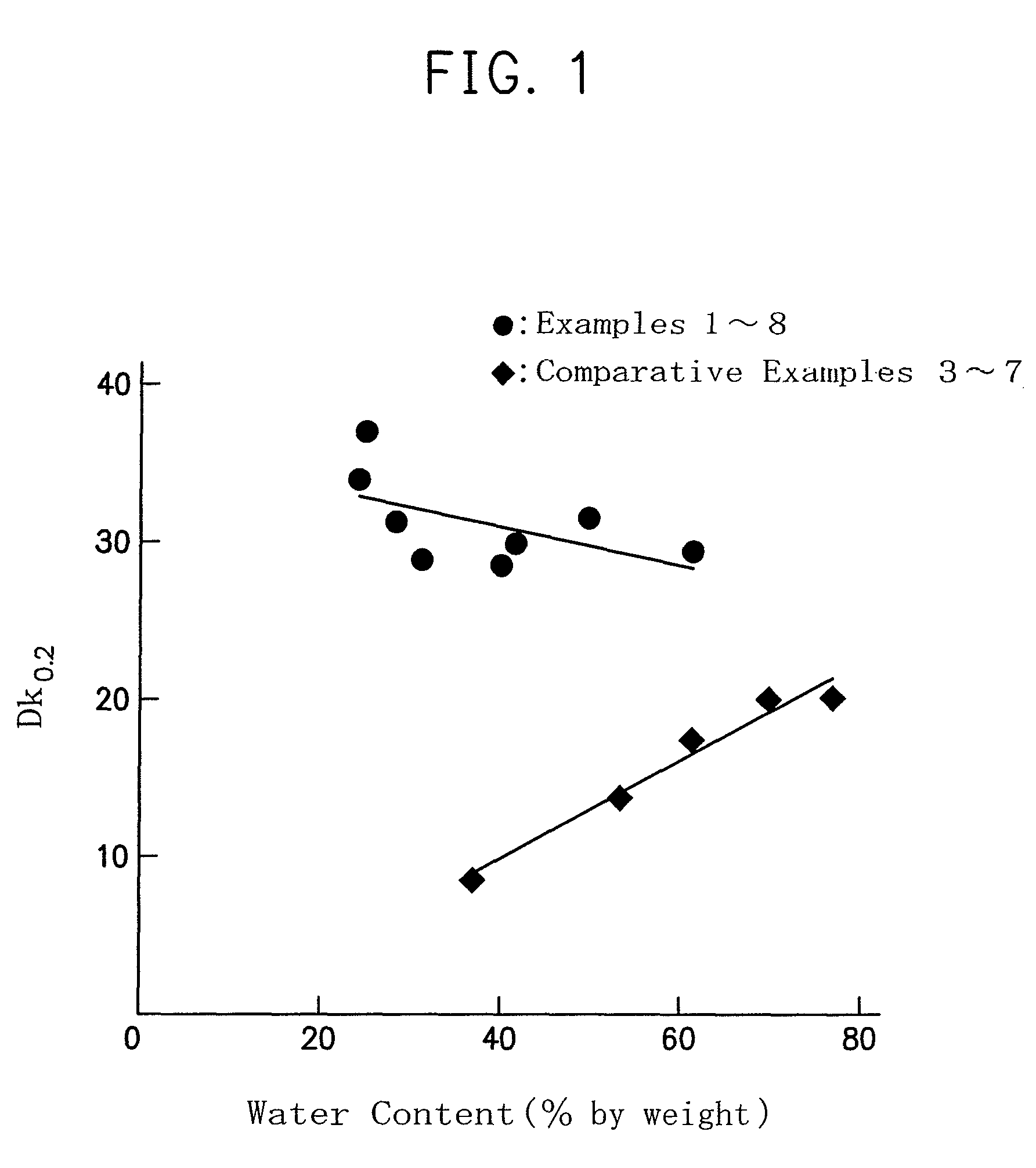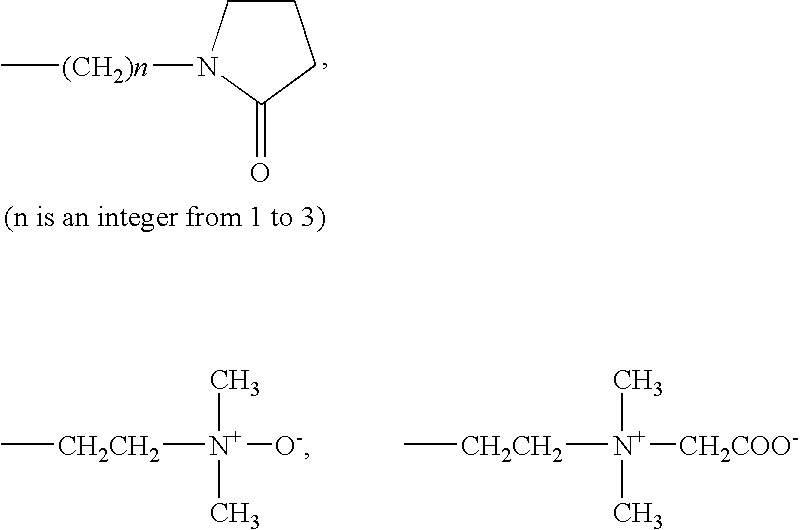Fumaric acid derivatives and ophthalmic lenses using the same
a technology of ophthalmic lenses and derivatives, which is applied in the field of ophthalmic lenses using ophthalmic lenses, can solve the problems of minor market penetration of ophthalmic acid esters proposed in the foregoing patent publications, limited composition ratio, and insufficient explanation of the reason, etc., to achieve improved compatibility with other hydrophilic monomers, improved oxygen permeability, and high oxygen permeability
- Summary
- Abstract
- Description
- Claims
- Application Information
AI Technical Summary
Benefits of technology
Problems solved by technology
Method used
Image
Examples
embodiments
[0059]The present invention is specifically illustrated below with reference to several working examples.
Synthesis of Compound 1 (2-methoxyethyl-3-tris(trimethylsiloxy)silylpropyl fumarate)
[0060]The fumaric acid diester of the present invention (compound 1) may be obtained according to the following reaction formulae:
[0061]
[0062]The synthesis was initiated by mixing 5.0 g (51 mmol) of maleic acid anhydride with 3.9 g (51 mmol) of 2-methoxyethanol, and dissolving the mixture by adding 30 ml of tetrahydrofuran (hereinafter referred to as “THF”). Then, 73 mg (0.72 mmol) of triethylamine (hereinafter referred to as “Et3N”) was added to the mixture and allowed to react for 2 hours at 70° C. A mixed solvent of ether / THF was added to the reaction solution for extraction, which was then dried over magnesium sulfate, and the solvent was distilled off.
[0063]The 2-methoxyethyl maleate thus obtained (6.5 g (37 mmol)) was added to 10 ml of thionyl chloride (hereinafter referred to as “SOCl2”), a...
examples 1 and 2
, and Comparative Examples 1 and 2
[0071]Fifty parts by weight of compound 1, 33 parts by weight of N-vinyl pyrrolidone (hereinafter referred to as “NVP”), and 17 parts by weight of 2-hydroxyethyl methacrylate (hereinafter referred to as “2-HEMA”) were dissolved by adding 0.3 parts by weight of ethylene glycol di(meth)acrylate as a crosslinking agent, and 0.3 parts by weight of 2,2′-azobisisobutyronitrile as a polymerization initiator. This solution was then poured into a tool made of two glass plates (75 mm×25 mm×2 mm) between which nylon sheet and silicone spacers cut out with a diameter of φ15 and having a thickness of 0.2 mm are sandwiched.
[0072]Next, the tool was clipped to prevent leaking, placed in the programmed oven, and heated from room temperature to 60° C. over a period of one hour, held at this temperature for 2 hours, heated to 75° C. over a period of one hour, and held at this temperature further for 2 hours. The tool was then heated further to 90° C. over a period of ...
examples 9-23
[0120]Compounds 2 to 4, obtained as described above, were used to prepare the compositions of the copolymer components as shown in Tables 4 to 7. The preparations were polymerized using the methods described in Examples 1 and 2 under the following temperature conditions: they were heated from room temperature to 90° C. over a period of 30 minutes, held at this temperature for 1 hour, then heated to 110° C. over a period of 30 minutes, held at this temperature for 1 hour, and gradually cooled down to room temperature. Polymer films with a thickness of 0.2 mm were thus obtained. The polymer films obtained were hydrated in distilled water, and their properties were tested. The results are shown in Tables 4 to 6.
[0121]Compound 3 was formulated in the copolymer compositions shown in Table 5, dissolved by adding 0.3 parts by weight of ethylene glycol dimethacrylate as a crosslinking agent and 0.3 parts by weight of 2,2′-azobisisobutyronitrile as a polymerization initiator, and then poured...
PUM
| Property | Measurement | Unit |
|---|---|---|
| molar ratio | aaaaa | aaaaa |
| molar ratio | aaaaa | aaaaa |
| molar ratio | aaaaa | aaaaa |
Abstract
Description
Claims
Application Information
 Login to View More
Login to View More - R&D
- Intellectual Property
- Life Sciences
- Materials
- Tech Scout
- Unparalleled Data Quality
- Higher Quality Content
- 60% Fewer Hallucinations
Browse by: Latest US Patents, China's latest patents, Technical Efficacy Thesaurus, Application Domain, Technology Topic, Popular Technical Reports.
© 2025 PatSnap. All rights reserved.Legal|Privacy policy|Modern Slavery Act Transparency Statement|Sitemap|About US| Contact US: help@patsnap.com



